Situation
Literacy and Numeracy are important cross-curricular priorities in the curriculum for obvious reasons. Often people think that teaching students with poor literacy and numeracy skills how to code will give them an opportunity to excel where literacy and numeracy don’t matter. In practice, poor literacy and numeracy have a profoundly detrimental impact on a student’s ability to learn to code. This is because:
- Students need to be able to think logically and systematically about a problem and often apply mathematical concepts to reach an answer.
- Students need to be able to read and comprehend the problems being posed to them in order to be able to develop solutions.
- Students need to write code very precisely, taking into account consistent use of capitals and consistent spelling or their code will not run.
- Students need to be able to read and interpret error messages in order to debug their code and fix the problems that they are encountering.
As such, it has become important for me to have an understanding of the different strategies available to improve students literacy and numeracy skills where possible.
Action
With regards to numeracy, I have taken a systematic approach to help students to step through the process. This may be by using a diagram to explain the logic of a process or it may be through having students step through an action physically to understand the process that they need to take thereby presenting the same information in multiple modes.
I have also had discussions with my colleagues to understand what to expect of particular year levels for things such as calculating angles of triangles or understanding decimal numbers as percentages. Both of these are expected to be understood by students undertaking our coding courses but in some instances, they have not yet learned these concepts in maths to the appropriate levels.
I also take the opportunity to reinforce critical mathematical concepts such as place value whenever they occur in my content. Teaching students how to count in binary strengthens their understanding of place value in a decimal system.
With regards to literacy, I have taken some of the following actions to support students with poor literacy:
- Introduced students to the read-aloud instructions o
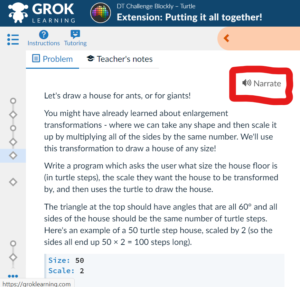 n Grok Learning and the Immersive Reader in OneNote to assist them with reading and understanding the problems being posed.
n Grok Learning and the Immersive Reader in OneNote to assist them with reading and understanding the problems being posed.
- Encouraged students to use a tool to assist with their writing such as Grammarly for their written projects – particularly for my Business Certificate students.
- Worked with one of the EAs assigned to my class to simplify and scaffold notes and worked examples for students who were struggling to follow the more detailed ones I had provided.
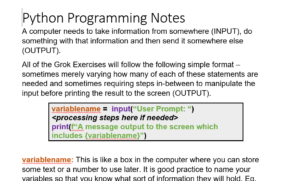
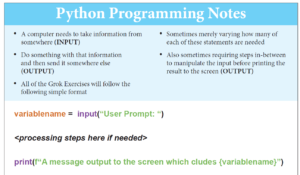
- Provided access to an online text comparison tool (text-compare.com) to help students to distinguish between the expected and actual output. This was particularly helpful for students with dyslexia.
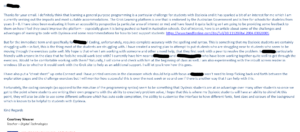
- Contacted Grok Learning Support to discuss some of the challenges students with Dyslexia face when learning to code and offered some ideas of what could help. Some of these changes have started to be implemented in the Grok Learning platform – such as the inclusion of narration and settings controlling the display of the interface.
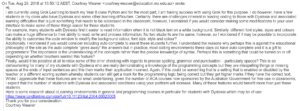
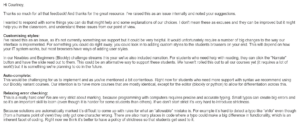

Outcome
I have noticed more students becoming more independent in my classes with improved support to literacy and numeracy that was affecting their ability to demonstrate their learning in Digital Technologies. This has resulted in higher levels of achievement in my subject and hopefully, this is supported in their other classes as well.
The parent of one of the students I assisted sent a kind thank you email for the support and accommodations that her son received during our Year 8 Digital Technologies course. He has since selected Computer Science at an ATAR level – a testament to the fact he was able to persevere in learning to code despite the challenges Dyslexia presented. I have at least one other students with Dyslexia who I have supported similarly and has made the same subject selection.
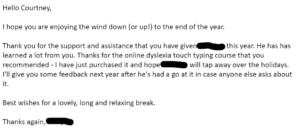
I look forward to the 2021 introduction of an intensive literacy support program in the school to continue developing literacy further.